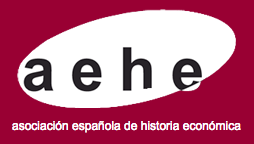Top incomes, natural resources, and populism. Colombian inequality in the Latin American mirror (1938-1988)
DOI:
https://doi.org/10.33231/j.ihe.2022.05.001Keywords:
Inequality, Colombia, Populism, Natural resources, D31, N36, N56, P48Abstract
The paper makes three primary contributions. First, it presents an alternative method of estimating income inequality, one based on dynamic social tables, that allows measuring top incomes shares when fiscal records are not available. The second contribution is the series of estimations themselves, which are included in the statistical appendix. Third, it presents a comparative historical analysis of the results. Overall, it concludes that the rise in coffee prices in Colombia during and after World War II primarily benefited landowners and thus resulted in an increase in the income share of the top 1% as well as in total inequality. The comparative analysis suggests that the trend, which differentiates Colombia from other Latin American countries, was the result of the nation’s lack of populism.
Downloads
Downloads
Published
How to Cite
Issue
Section
License
Copyright (c) 2022 Javier E. Rodríguez Weber

This work is licensed under a Creative Commons Attribution-NonCommercial-NoDerivatives 4.0 International License.
Aquellos autores/as que tengan publicaciones con esta revista, aceptan los términos siguientes
- Los autores/as conservarán sus derechos de autor y garantizarán a la revista el derecho de primera publicación de su obra, el cuál estará simultáneamente sujeto a la Licencia de reconocimiento de Creative Commons Reconocimiento-No comercial-Sin obra derivada 4.0 Internacional que permite a terceros compartir la obra siempre que se indique su autor y su primera publicación esta revista, y no permite hacer uso comercial de la misma ni tampoco obras derivadas.
- Los autores/as podrán adoptar otros acuerdos de licencia no exclusiva de distribución de la versión de la obra publicada (p. ej.: depositarla en un archivo telemático institucional o publicarla en un volumen monográfico) siempre que se indique la publicación inicial en esta revista.
Plagio y fraude científico
La publicación de un trabajo que atente contra los derechos de propiedad intelectual será responsabilidad de los autores/as, que serán los que asuman los conflictos que pudieran tener lugar por razones de derechos de autor. Los conflictos más importantes pueden darse por la comisión de plagios y fraudes científicos.
Se entiende por plagio:
- Presentar el trabajo ajeno como propio.
- Adoptar palabras o ideas de otros autores sin el debido reconocimiento.
- No emplear las comillas u otro formato distintivo en una cita literal.
- Dar información incorrecta sobre la verdadera fuente de una cita.
- El parafraseo de una fuente sin mencionar la fuente.
- El parafraseo abusivo, incluso si se menciona la fuente.
Las prácticas constitutivas de fraude científico son las siguientes:
- Fabricación, falsificación u omisión de datos y plagio.
- Publicación duplicada.
- Conflictos de autoría.





